Like all terrific visionaries, Frank Lloyd Wright had the foresight to prepare for the upcoming. In 1955—just four years ahead of his demise at 89—he launched a licensing system that led to dozens of higher-profile manufacturer partnerships for decades to come. “Wright wanted to democratize design and style, and products and solutions ended up an approachable medium,” says Stuart Graff, president and CEO of the Frank Lloyd Wright Foundation. “He preferred to make thoughtful style and design a component of everyday lifestyle.”
Wright’s merchandise layouts play a pivotal purpose in his fabled portfolio. For his 1,114 architectural projects—of which 532 came to fruition—he built 1000’s of furniture and decor things spanning eating home sets to business desks, textiles, vases and tablewares. “Many of his merchandise patterns weren’t correctly cataloged [at the time], but when you glance at the technical designs of past assignments, they are everywhere you go,” says Graff of the broad assortment of objects. In modern years, the foundation has turned its focus to Wright’s furnishings, equally sketched and understood, to bring the late architect’s state-of-the-art works to a new generation of decorators. “Even 60 decades after his loss of life, his types are nonetheless forward-contemplating,” he claims. “He put so numerous strategies into motion knowing they would be remaining in the palms of the foreseeable future designers.”
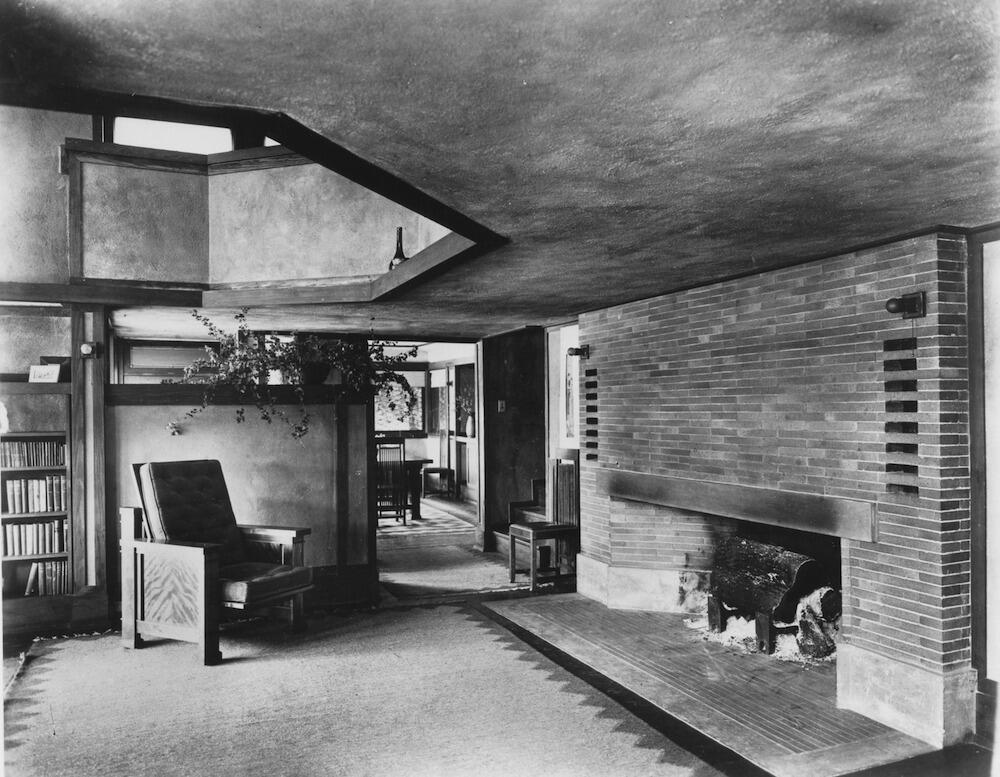
An inside shot of the Isabel Roberts residence by Wright, as seen in 1908Courtesy of the Frank Lloyd Wright Basis Archives (The Museum of Modern-day Art | Avery Architectural & Fantastic Arts Library, Columbia College, New York). All Legal rights Reserved.
Of class, in buy to completely take pleasure in the fashionable-day appeal of Wright’s styles, we must first recognize his then-radical worldview. A proponent of the German philosophy of Gesamtkunstwerk—which approximately translates to “total do the job of art”—he fervently adhered to the belief that all artwork, whether paintings, operas or built environments, really should be produced as a full, unified total.
For Wright, this intended coming up with his spaces down to the dinner napkins—and in some situations, hostess gowns—so that his consumers have been actually immersed in his vision. “He approached all of his function with the objective of developing a deeper connection concerning person, nature and structure,” describes Graff. “His merchandise are an case in point of that synthesis in product variety.”
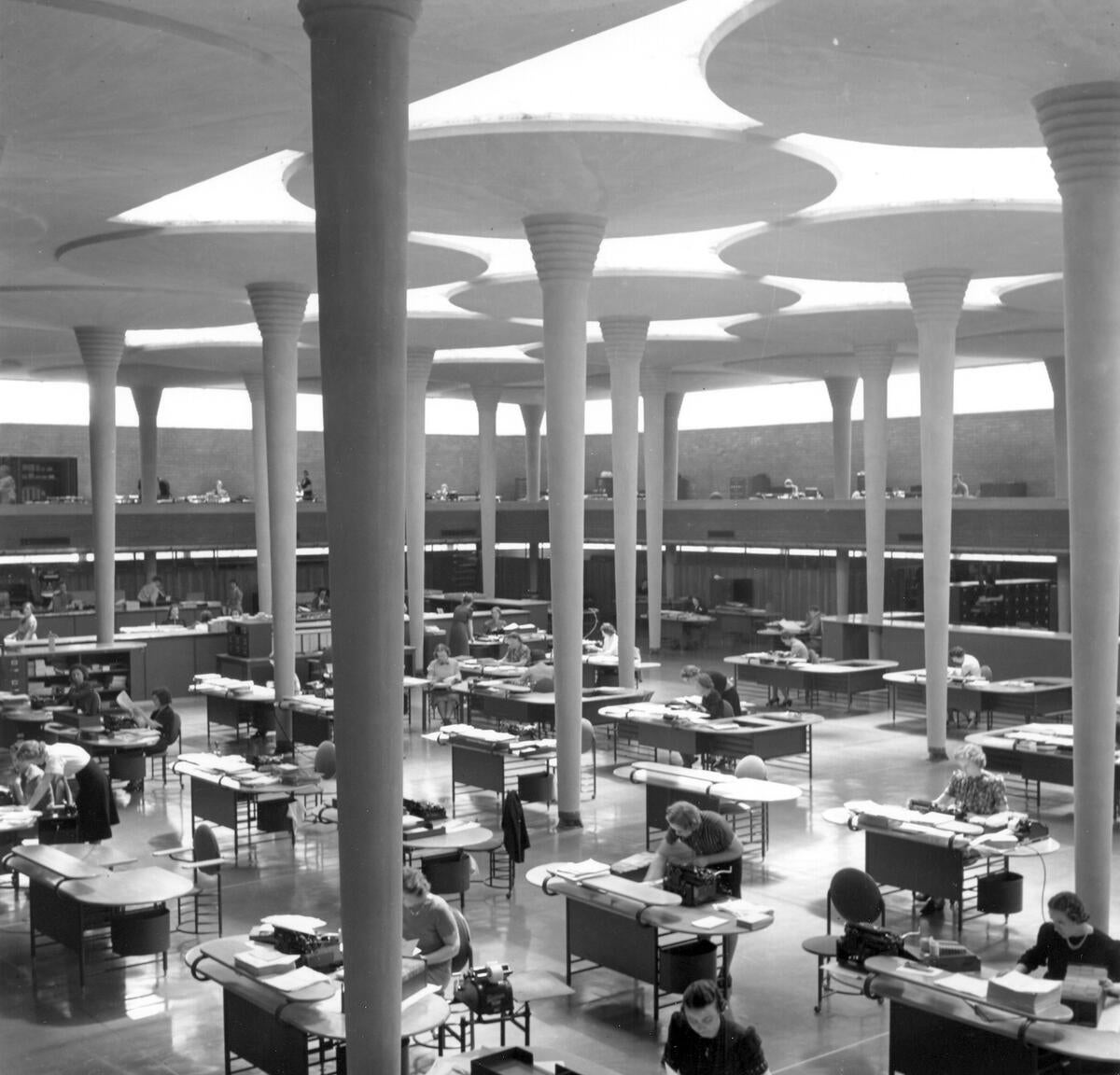
A 1936 check out of the interior of SC Johnson Administration Building workroom exhibiting exclusive help columns allowing the room to be bathed in purely natural mildCourtesy of the Frank Lloyd Wright Basis Archives (The Museum of Present day Art | Avery Architectural & Fine Arts Library, Columbia University, New York). All Rights Reserved.
The iconic SC Johnson Administration Building in Racine, Wisconsin, provides a superlative situation in stage. Finished in 1939 and commonly viewed as to be Wright’s magnum opus, the building is buttressed by lily-pad-shaped columns that aid its glass ceiling, and its open performing room is outfitted with streamlined, ergonomic place of work furnishings such as chairs with tilting backrests and multilevel desks with built-in filing cabinets and sufficient room for knee clearance.
In household initiatives, in the meantime, he utilized a symphony of reducing-edge shopper-concentrated designs ranging from wheelchair-available doorway knobs and gentle switches to insulating tall-back again dining chairs and wall-mounted toilets for effortless cleaning. “Despite [him] getting so famously vain, Wright’s patterns were exceptionally person-centric,” states Graff. “He wished to elevate and improve his clients’ lives through structure.”
By the early 1950s, Wright had designed a near friendship with legendary Property Stunning editor in main Elizabeth Gordon, who usually showcased his assignments in the web pages of the magazine. Earth War II experienced finished, stateside mass generation was on the rise, and the political weather of the Cold War presented an possibility to champion economical American-built patterns. “Wright’s whole ethos was casting off the Old Earth and constructing a new landscape based mostly on American beliefs,” states Graff. Wright’s licensing endeavours ended up a important way to recognize that vision: “This venture authorized him to make his models readily available to all people, not just shelling out consumers.”
At Gordon’s insistence, Wright began licensing his solutions in 1955 to manufacturers this kind of as Schumacher (fabrics and wallpapers), Heritage-Henredon (home furniture) and Martin-Senour Paints. Even so, these partnerships often proved problematic for Wright, who struggled to compromise on his special eyesight for each and every style and design. “He signed discounts and backed out of them, like 1 with Leerdam [glass],” states Graff. “He wasn’t just likely to put his title on everything.”
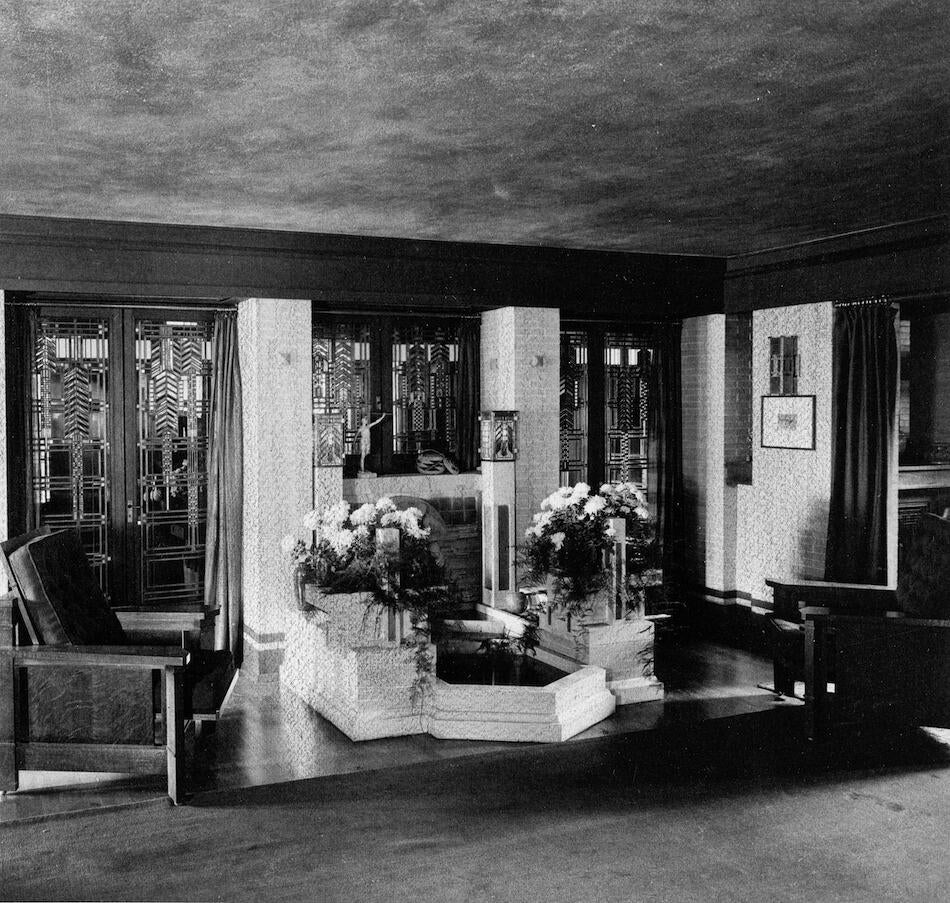
The interior of the Dana-Thomas house, photographed in 1900, showcases Wright’s completely integrated interior design like furnishings, artwork glass, lighting and sculptureCourtesy of the Frank Lloyd Wright Basis Archives (The Museum of Modern day Artwork | Avery Architectural & Fine Arts Library, Columbia University, New York). All Rights Reserved.
Right after his death in 1959, the basis continued to release accredited items with Schumacher until as just lately as 2017, and launched many traces in collaboration with manufacturers, which include Tiffany & Co. (china, silver, crystal wares), Lego (toys) and Cassina, which reproduced Wright’s famed origami-esque Taliesin 1 armchair in 2018. “Over time, the program began to focus on a couple of Wright’s most effective-acknowledged models relatively than the breadth and relevance of his whole portfolio,” says Graff. “We’re turning our attention to bringing a broader assortment of his types to the marketplace.”
Companies fascinated in reproducing or reinterpreting any of Wright’s domestic models have to 1st be vetted by the foundation’s licensing company, Jewel, prior to they are granted obtain to the digitized archives for inspiration. After a concept is agreed on and a agreement is signed, the foundation’s in-property style and design crew collaborates with the brand’s designers on every thing from preliminary drawings to prototypes until the closing design and style is reached. “We never just place a little something out there that appears to be like Wright might have created it,” states Graff. “It has to be grounded in his rules.”
Presently, a lot more than 50 corporations about the planet maintain licenses to produce Wright’s goods. “His concepts are even now some of the most exciting factors going on in structure today,” suggests Graff.
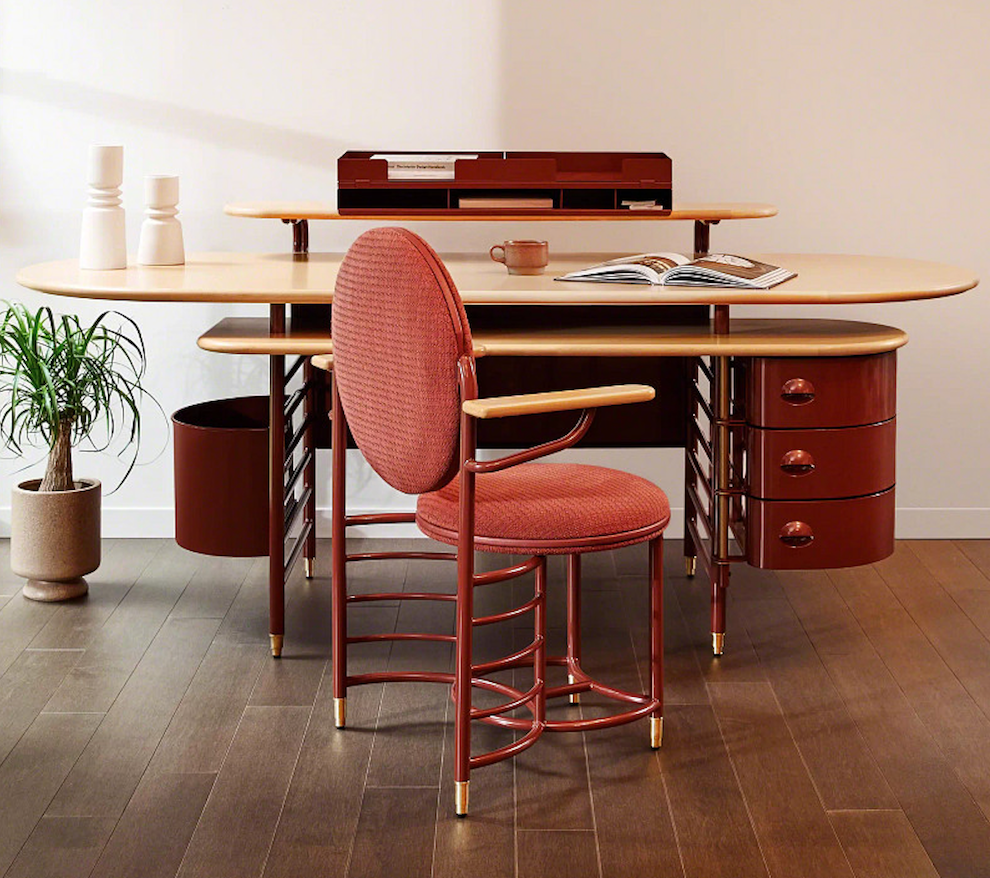
The Frank Lloyd Wright Racine Signature desk and guest chair by SteelcaseCourtesy of Steelcase
Acquire, for instance, Steelcase’s newly launched Frank Lloyd Wright Racine Collection. The collaboration features 8 operate-from-home-helpful types from the architect’s aforementioned SC Johnson Administration Setting up job, whose household furniture was initially created by Steelcase much more than 8 a long time ago. Three of the pieces, known as the Racine Signature line, are nearly precise replicas, preserve for more substantial proportions, even though the remaining models offer you modern reinterpretations in expanded content palettes and colorways. “It’s in our brand’s DNA to provide user-centric furniture, so it was quick to use Wright’s rules to up-to-date designs,” states Meghan Dean, basic manager of ancillary merchandising and partnerships at Steelcase. “The identical lovely nonetheless utilitarian information that delighted end users in 1939 nevertheless allure customers nowadays.”
In 2021, Brizo unveiled the Frank Lloyd Wright Tub Selection. The collaboration took practically four years from commence to complete and presents 15 bathroom fixtures, together with a showerhead, 3 different varieties of lavatory taps, a tub filler, towel bars and a tissue holder. “As we intended, we asked ourselves what the bathtub house would look like via Frank Lloyd Wright’s eyes,” claims Judd Lord, senior director of industrial style at Brizo. For the structure crew at Brizo, keeping accurate to Wright’s eyesight intended wanting to mother nature for inspiration. The One-Cope with faucet, for example, functions a cantilevered spout that forges a aspect-flowing h2o stream meant to evoke a waterfall. The centerpiece of the series, the ceiling-mounted Raincan showerhead, offers an built-in ambient lighting process that makes the illusion of a wall of sunlit windows. “For us, paying out homage to Wright wasn’t just about his visible cues,” claims Lord. “We certainly wanted to comprehend and incorporate his fundamental philosophy.”
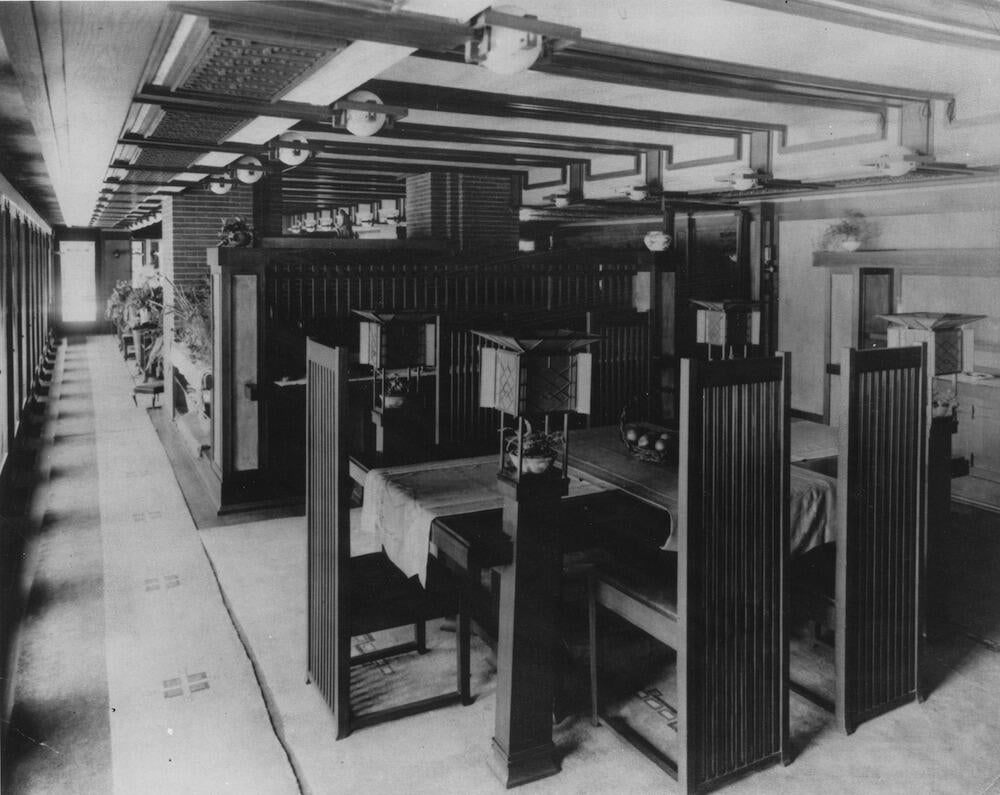
Wright built eating chairs with insulating, extra tall backs to make a a lot more personal setting, as viewed in the 1909 Frederick C. Robin ResidenceCourtesy of the Frank Lloyd Wright Foundation Archives (The Museum of Present day Artwork | Avery Architectural & Wonderful Arts Library, Columbia University, New York). All Rights Reserved.
In addition to home furniture and fixtures, some licensing chances had been centered solely on channeling Wright’s ethos into new classes. Crate & Barrel, for case in point, tapped Wisconsin-based mostly brand name Epicurean to generate a selection of serving equipment and slicing boards impressed by the graphic motifs the architect used in his stained-glass windows. “Both the Crate & Barrel and Frank Lloyd Wright makes have a wealthy record in functional magnificence and considerate design and style, as well as a deep thing to consider for the ecosystem,” claims Alicia Waters, government vice president of Crate & Barrel. “This partnership was a natural match.”
Looking in advance, Graff suggests the basis is at present hard at perform on a shortly-to-be-introduced line of fabrics with Designtex, as properly as a residing home selection by Steelcase. “Above all else, Wright considered that terrific design was primarily based in nature and therefore timeless,” suggests Graff. “And like character, terrific structure is continuously evolving and acquiring new ways to meet the needs of the present-day minute.”
For your up coming challenge, contemplate these 12 recently revived Frank Lloyd Wright designs.
Homepage photograph: An inside shot of the Isabel Roberts residence by Wright, found right here in 1908 | Courtesy of the Frank Lloyd Wright Foundation Archives (The Museum of Fashionable Artwork | Avery Architectural & Fantastic Arts Library, Columbia College, New York). All Rights Reserved.
